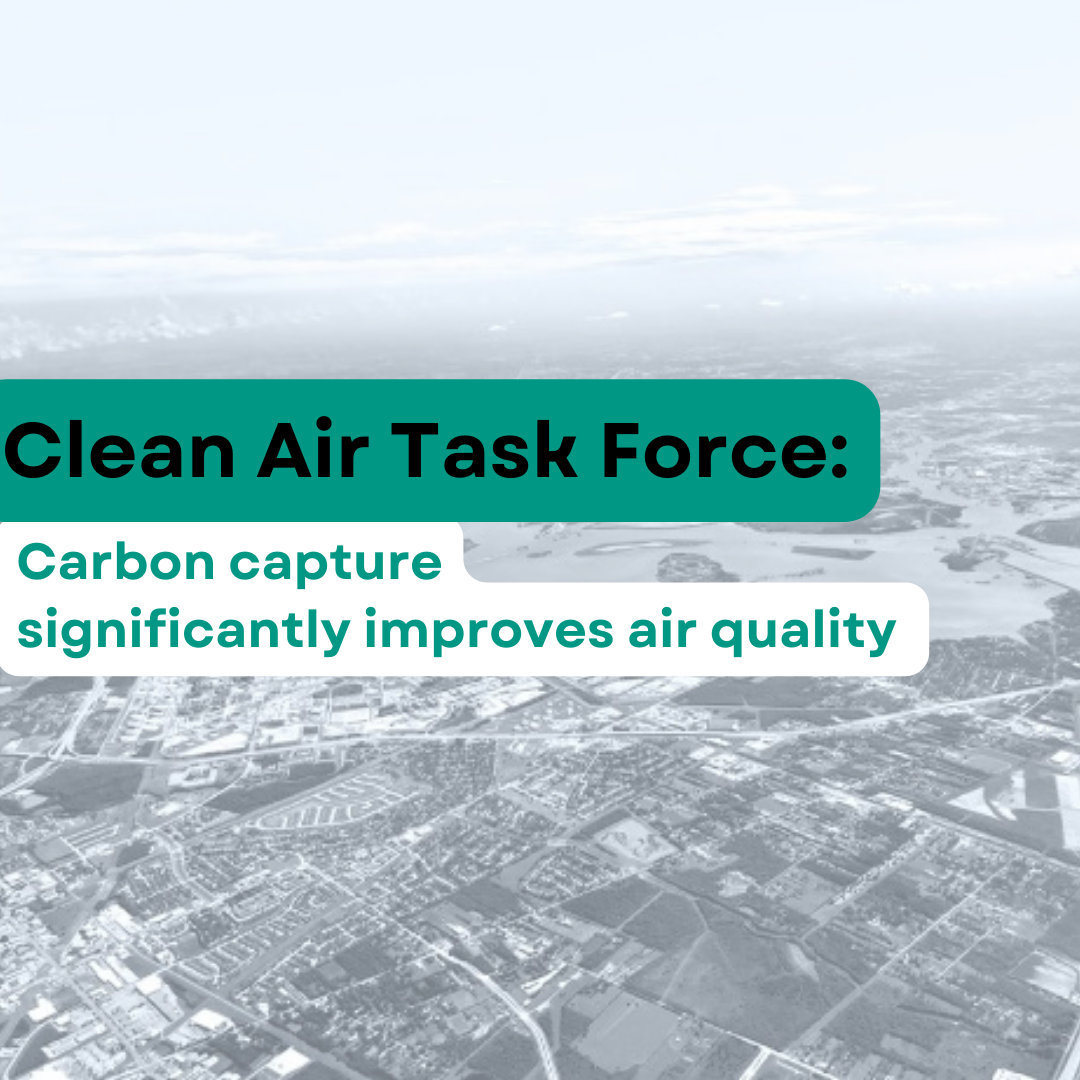Clean Air Task Force Study Finds Carbon Capture Significantly Improves Air Quality
Following a first-of-its-kind study by the Great Plains Institute last year, another analysis of carbon capture technology by the Clean Air Task Force shows its substantial benefits to regional air quality.
The organization recently published a landmark study detailing the quantifiable health benefits of carbon capture and storage and how this crucial technology not only reduces emissions but improves air quality. The study, titled Air Pollutant Reductions from Carbon Capture: An Analysis of the Air Quality and Public Health Benefits of Carbon Capture and Storage, analyzed two cement plants and two refineries to assess the impacts of carbon capture and storage. The results confirm that carbon capture and storage is impactful in creating a more sustainable energy future, a cleaner environment, and a healthier society.
The Clean Air Task Force is an international, non-partisan environmental advocate whose mission is to advance bold solutions that achieve net-zero emissions and maintain high energy availability at an affordable cost.
In one of its key findings, the study determined that installing carbon capture systems at large industrial facilities like refineries and cement plants can reduce conventional air pollutant emissions like sulfur dioxide (SO2), soot (particulate matter), and in some cases, nitrogen oxides (NOx). These reductions, in turn, resulted in quantifiable public health benefits ranging from almost $400 million to $1 billion. In fact, when the benefits from both CO2 reductions and criteria air pollutants are considered together, the total benefits are significantly greater than the cost of installing CCS technology.
The analysis of the two cement factories and two refineries found that the use of a carbon capture system reduced CO2 emissions by nearly 90%, slashed particulate matter by more than 90%, and nearly eliminated SO2 emissions from the largest point sources at these facilities. The NOx reductions observed in this study varied from a few percent at the cement plants to more than 30% at the refineries. Importantly, these results accounted for emissions associated with the use of extra fuel to provide steam to the capture unit.
These benefits could significantly improve quality of life and make Houston an even more vibrant, and healthier place for the 7.5 million people who live and work throughout the region.
Key findings:
- Installing carbon capture systems at large industrial facilities like refineries and cement plants can reduce conventional air pollutant emissions like sulfur dioxide (SO2) and soot (particulate matter) and, in some cases, nitrogen oxides (NOx), and produce substantial additional public health benefits from these reductions. These reductions occur because pollutants such as SO2 and particulate matter must be removed from the flue gas stream before it enters the carbon capture system.
- When the benefits from both CO2 reductions and criteria air pollutant reductions are considered together, the total benefits are significantly greater than the costs of adding the technology.
- An engineering analysis of two cement manufacturing plants and two petroleum refineries finds that the use of the amine-based carbon capture system modeled would reduce CO2 emissions by nearly 90%, reduce particulate matter emissions by more than 90%, and nearly eliminate SO2 emissions from the largest point sources at these facilities.
- Modeled NOx reductions vary from a few percent at the cement plants to more than 30% at the refineries. The carbon capture system itself produces a small net increase in VOC emissions at each facility. These results account for emissions associated with the use of extra fuel to provide steam to the capture unit.
To read the full report from the Clean Air Task Force, click here.








